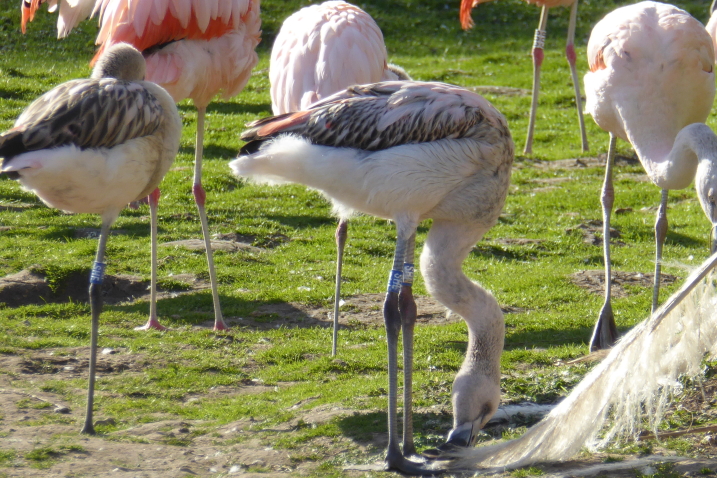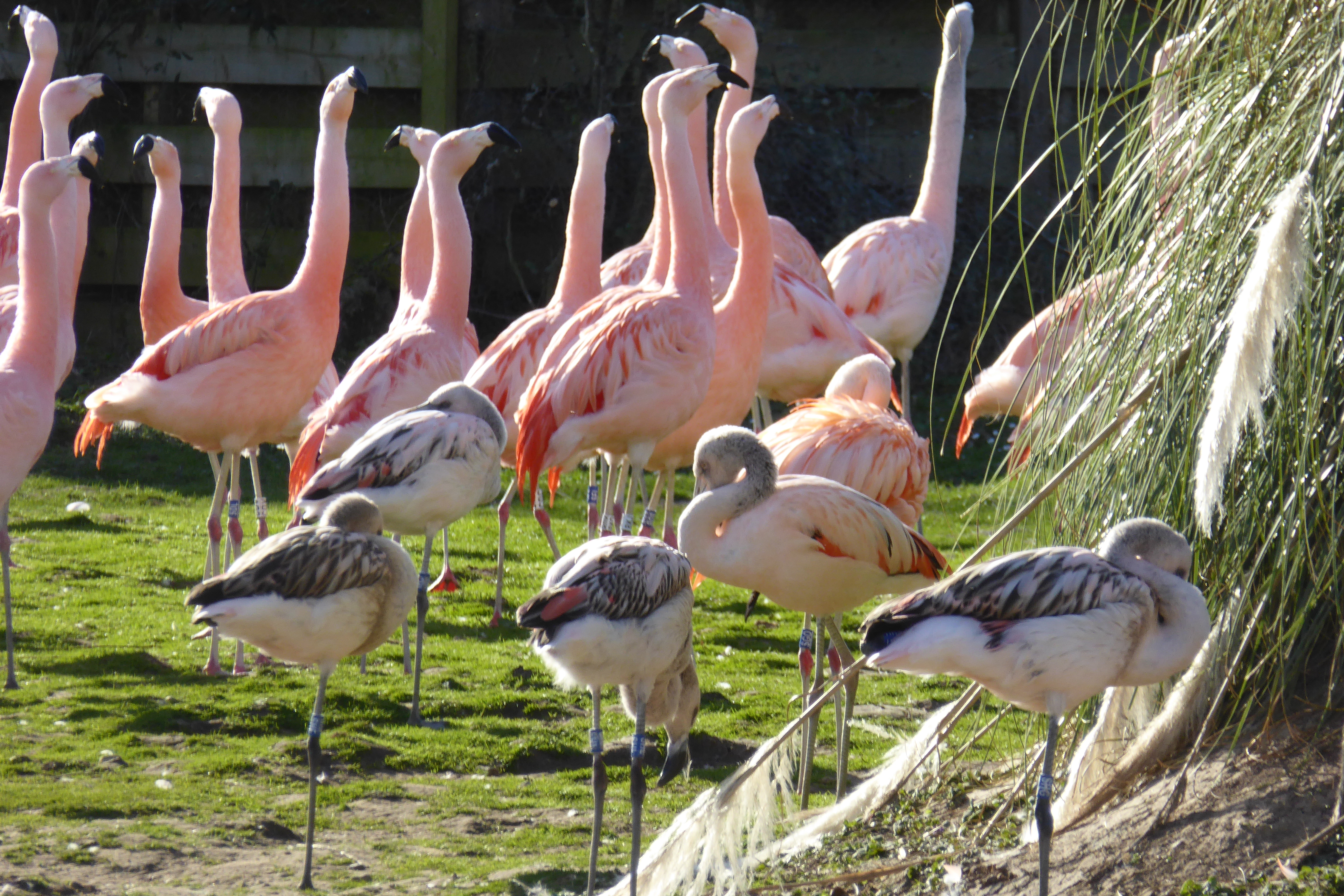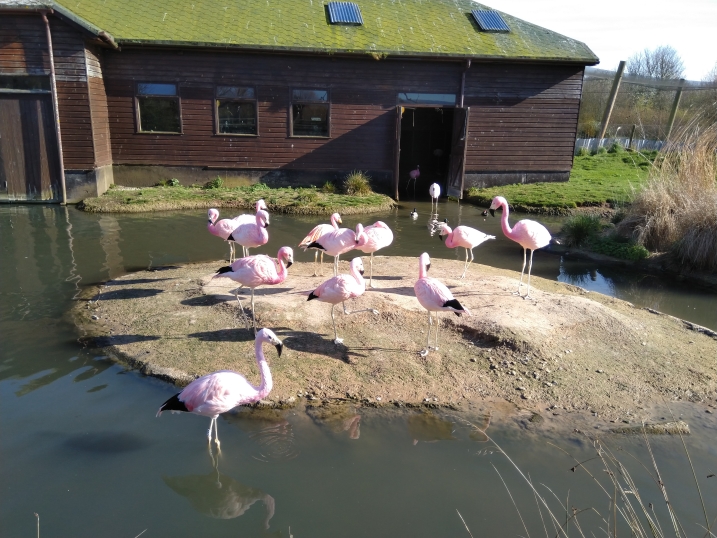A new chapter for the foster chicks
The foster chicks have flown the nest! Where have they moved to and what happens now? Find out more details in this update to the WWT Flamingo Diary.
Exciting times for the foster-reared flamingo chicks at WWT Slimbridge. These birds have fledged the nest from their surrogate parents in the Andean flamingo flock and migrated the short distance to the Chilean flamingo flock to be back with those birds that originally laid the eggs they hatched from.

Two of the fostered Chilean flamingo youngsters make the short trip from the Andean flamingo flock to the South American Pen to join the main group of Slimbridge's Chilean flamingos.
We’ve taken the opportunity to ring these birds on both of their legs, so we can follow them in each flock and always see who is who. When the birds were caught, they were given a health check (their feet were in perfect condition, which is excellent to see), and we sexed them based on their height, weight and body size.
Flamingos are, of course, famous for standing on one leg. When you’re trying to follow birds to look at who is who, flamingos can have an annoying habit of tucking up the leg with their ring on. So a whole flock of birds can suddenly become unrecognisable. Back in 2016 we did a similar thing with some of the adult Chilean flamingos for another research project, and this worked really well for identifying birds that were often seen with one other flamingo, and birds that were much more gregarious- having no favourite flamingo friend.
If you’re keen to look out for the foster-reared juveniles on your next visit to WWT Slimbridge, they wear the following leg cods on their large plastic (Darvic) rings in blue with white letters. “SHB SHC” and “SHG SHH” who are male. “SHD SHF”, “SHI SHJ”, “SHL SHN” and “SHO SHP” who are all female.

Spot the blue rings. The double ringing of the fostered chicks means they can always be identified, regardless of how many legs they are standing on.
We’re investigating how the birds settle into the group and how they grow behaviourally compared to the parent-reared offspring. We’re going to follow their choice of social partners to see who they mix with and where they can be seen in the flock.

Young flamingos are more often seen on the edges of the flock. A group of adults is performing courtship display in the background, with juveniles resting up in front.
There is published research on wild flamingos that shows youngsters are “pushed out” of the flock by adults. Flamingos are attentive parents, but when chicks can feed themselves that’s when parenting stops. It’s a lot of work to raise a flamingo chick and the parent birds need time to recover, so juveniles can find themselves relegated to the side-lines. This partly explains the colour difference of juvenile flamingos to adults. The brown-grey feathers of youngsters reduce the attention then get from adults- unless they end up in the way of an older bird. And then they are likely to experience a sharp peck or jab from an angry beak.

Peace and quiet returns! The "golden oldies" of the Andean flamingo flock can get back to growing a new set of multi-coloured feathers ready now that the young'uns have flown the coop!
With the Andean foster parents needing to conserve their energy and moult back into new feathers, it was the right time to move the youngsters into a bigger crowd. Even though it might mean more hustle and bustle, it will give them a chance to develop their behaviours alongside of the chicks already in the Chilean flamingo flock.
To enable successful completion of this project, MSc student Peter from the University of Exeter’s Centre for Research in Animal Behaviour will be observing the Chilean flamingo flock from April until July to obtain a picture of what these juvenile flamingos do. Peter will be investigating not only the behaviour of the six fostered chicks, but also what the seven parent-reared Chilean juveniles get up. I will write an update on what he finds in a future flamingo diary when his project is completed. I hope to build a picture of the behaviour of these “extra special” young flamingos, and how they grow into adults, over the coming years.

MSc Animal Behaviour student Peter practices the methods used for his project on these extra special young flamingos.


